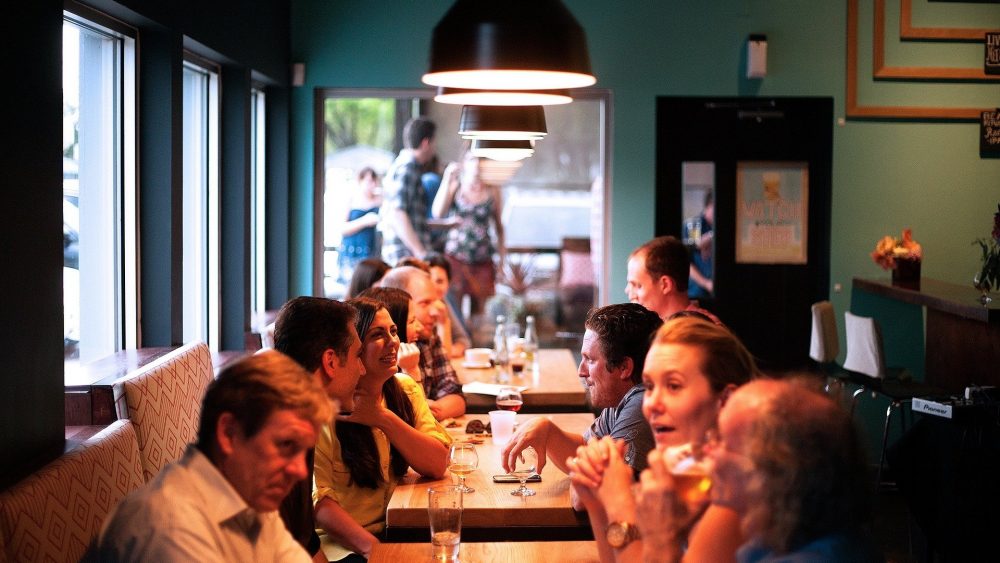The definition of nutrition has been closely related to health and disease since its inception. However, with the development of the concept of health we have started to associate nutritional science with many disciplines and thus, we have seen the rise of crossovers between nutrition and fields such as genetics, social sciences, anthropology, psychology and behavioural sciences among others. The importance of this multidisciplinary approach to nutrition has been reflected in the very first session of the Nordic Nutrition Conference 2020, where the focus was placed on Food-related behaviours on a changing society.
Professor Lotte Holm, who teaches Sociology at the Department of Food and Resource Economics in Copenhagen University talked about the changes in eating patterns observed in the Nordics countries over a period of 12 years. Lotte pointed to the close link between meal patterns and societal structures and how our eating habits have evolved with our changing society: from pre-industrial to industrial to our current post-industrial era. Nowadays, our society is heavily marked by phenomena such as globalisation, individualism and flexible working patterns and these have all played an important role in the way we eat. Thus, our current eating patterns should reflect the adaptation to the social hypotheses and constructs of the era that we live in… or do they?
A study designed to explore everyday eating patterns in the Nordic Countries (Denmark, Finland, Norway and Sweden) revealed how, overall, certain trends have remained stable over time. The Nordic countries continue to have core traditional elements in their national food habits and two marked lunch cultures (hot vs cold), as well as a dominant position of meat consumption during dinners. The main meals continue to be simple in their format rather than elaborate, favouring one-course meals and foods that require little to no preparation.
However, some changes have also come about, inducing the harmonization between food cultures in the Nordic countries. These trends could point towards the increased awareness of healthier eating habits. For instance, water is becoming a more popular drink for lunch and dinners as opposed to sodas and there has been a radical decline in the consumption of cake and pastries associated with the traditional fika culture in Sweden. Also, there has been an increase in vegetarian meals and the introduction of fruits and vegetables in breakfasts and cold lunches, as well as a rise in the consumption of cereals and yoghourts for breakfast.
Another interesting discovery is the marked unwillingness of the Nordic populations to decrease their meat intake for environmental reasons. In Denmark, this was particularly remarkable as up to 70% of the participants declared that they had not reduced their meat intake nor will they be willing to do so in the future. This might come hand-in-hand, with Denmark’s strong meat production industry and suggest that public health efforts towards promoting a reduction of meat consumption need to be addressed in a more productive way.
Looking at the context in which meals occur, the study discovered that eating still mostly happens at home. Eating alone and in shorter meals (lasting less than 10 minutes) are also increasing trends in Denmark and Norway but not in Sweden. The decrease in formality of meals has opened up for the inclusion of other activities while we eat, such as watching television, listening to the radio, reading, or using electronic devices. Interestingly, a de-structuring of gender roles when it comes to meal preparation has also been observed in this study, as more men across all age groups, education levels and income have started to take charge of cooking and planning meals.
Overall, little disruption was observed in meal patterns in the Nordic countries. There was a somewhat strong tendency towards individualisation and an even stronger towards flexibilization of meal patterns, as well as an increase in convenience meals, pointing towards commercialisation but not very strongly. Conversely, these trends are much more patent in other countries such as UK where where eating does not happen in peaks but irregularly throughout the day due to different schedules and the wide availability of food at any given time of the day, what is known as ‘the grazing hypothesis’.
It seems that Nordic food cultures are becoming more and more like each other in certain aspects, although certain national differences remain, most markedly the existence of two clear lunch patterns and the adaptation to personal life arrangements. So, while Sweden and Finland tend to favour hot lunches, Denmark and Norway favour cold lunches. Also, those within the workforce tend to have longer meals with their colleagues, and those who live alone have shorter dinners in a more informal setting and usually combined with another activity, like watching television or using electronic devices. However, Nordic countries do not seem to have absorbed global patterns seen in other countries.
Looking to the future, Lotte expects to see an increase in commercial eating in the form of more meals taking place outside the household and the increase of consumption of ready-made or pre-prepared meals. However, she is also hopeful that with an increasing concern for the environment we might see an inclination to decrease meat consumption, although this seems unlikely especially in Denmark. Nutrition should no longer be considered an isolated concept and it is only through understanding the complex context that surrounds it that we can hope to influence individual choices and governmental policies that affect our eating habits with hopes of a healthier society.
For more information on the topic you can consult the book Everyday eating: in Denmark, Finland, Norway and Sweden. A comparative study of Meal Patterns 1997-2012 by Jukka Gronow and Lotte Holm (eds), Bloomsbury Academic 2019.

